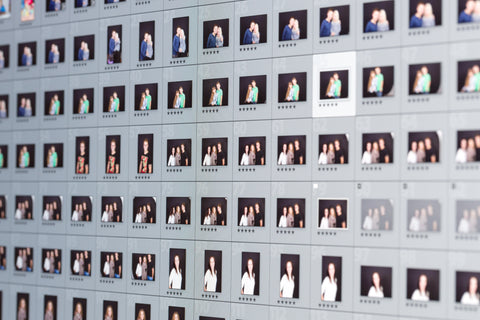- Lightroom Presets
- Mobile Presets
-
Photoshop
-
Learn
-
Support
-
Install
- Best Sellers
- Blog
By Amanda Padgett on | No Comments

You've successfully imported and edited your images in Lightroom. Great job! Now, it's time to export those cherished files for printing, sharing on a thumb drive, or uploading to Facebook to attract potential clients.
Exporting is a vital step where all your edits from the Develop module are applied to create a new version of your image (because Lightroom is non-destructive and won't overwrite your original file).
Exporting images can sometimes get confusing. Let’s face it; there are many different settings and endless combinations of numbers to input. So today, I will break it all down in an easy step-by-step format and let you know precisely what you need to do to export your photos.
Note: If you are trying to export from Lightroom Mobile, check out our separate tutorial here.
You can open the Export Dialog Box in 3 different ways:
It doesn’t matter how you get there. Any of these options will work, so choose the easiest one to remember.
It's crucial to take your time when exporting and carefully check each section. Now, let's walk through each section step by step:

First, you need to decide where you want the exported image to be stored on your hard drive. Lightroom cannot guess your preferred location, so it's essential to specify this.

Renaming your files during export can help you stay organized and quickly identify your images later.
By thoughtfully naming your files, you will streamline your workflow and make future file retrieval more efficient.

Properly configuring your file settings is essential to ensure your images look their best, whether for print or digital use.
File Format: Choose between TIFF, JPG, PSD, or the original file type. If you shot in RAW, you should select a different format since RAW files are not suitable for final use. I always recommend using JPG for most purposes due to its broad compatibility and smaller file size.
Color Space: For online or lab printing, set the color space to sRGB. This is the standard color space for most labs, ensuring your prints look as expected. For home printing, check your printer's manual to determine the appropriate color space and set it accordingly.
Quality: Always set the quality to 100. This ensures the highest possible image quality. Lowering the quality may save space, but it can significantly degrade your images. From experience, it's easy to forget to change this setting back after lowering it for web use, potentially resulting in poor-quality prints and wasted money.
By carefully setting these options, you can ensure your images are optimized for their intended use, whether for print or digital display.

The Image Sizing panel allows you to adjust the size of your image during export. You can leave the dimensions as they are, maintaining the original aspect ratio (typically 9x12 inches), or you can set specific dimensions based on pixels or inches. There are many combinations, so here are the essentials for different purposes:
Exporting for Print:
Exporting for Web:
Exporting for Facebook:
Adjusting these settings ensures that your images are optimized for their intended platform, whether for print, web, or social media.

Output sharpening allows you to enhance the sharpness of your images as they are exported from Lightroom. This can be tailored for either print or web use.
Sharpening for Web: The Screen setting can be pretty strong, so setting it to "Low" is usually sufficient to ensure your images look crisp without being over-sharpened. You can also choose to uncheck this and have no sharpening settings when exporting images for use on the web.
Sharpening for Print: For print, you can choose between two different paper types: Matte or Glossy. I recommend selecting "Matte" and setting the sharpening to "Standard" for a balanced level of sharpening that enhances your prints without making them appear overly sharp.

Watermarking is an important step when sharing images on the Internet. It helps protect your work from being stolen and promotes your studio or blog to viewers.
When to Use a Watermark:
Creating and Adding a Watermark:
By using the watermarking feature appropriately, you can protect your images and enhance your brand visibility when sharing your work online.

The Post-Processing panel lets you decide what happens immediately after your image is exported.
Show in Finder/Explorer:
Further Editing in Photoshop or PSE:
By configuring the post-processing settings, you can streamline your workflow and easily transition to further editing or locating your exported images.

Once you’ve configured all the necessary settings, press the "Export" button. Your selected photo(s) will be exported to the specified location using your chosen settings.
Below are screenshots of my export panel configurations for web and print use:

Tip 1. Develop a File Naming System:

Tip 2. Stay Persistent:
Tip 3. Use Multi-Batch Export:
Please feel free to download this Cheat Sheet to help you remember all the essential Lightroom Export Settings!
Do you have any questions or comments about How to Export from Lightroom? Leave us a comment below - we would love to hear from you! And PLEASE SHARE our tutorial using the social sharing buttons (we really appreciate it)!




Hi! I'm Amanda, a homeschooling mom of four, from South Carolina. I am passionate about photography, photo editing, and helping others learn to love their camera and editing programs.

Comments